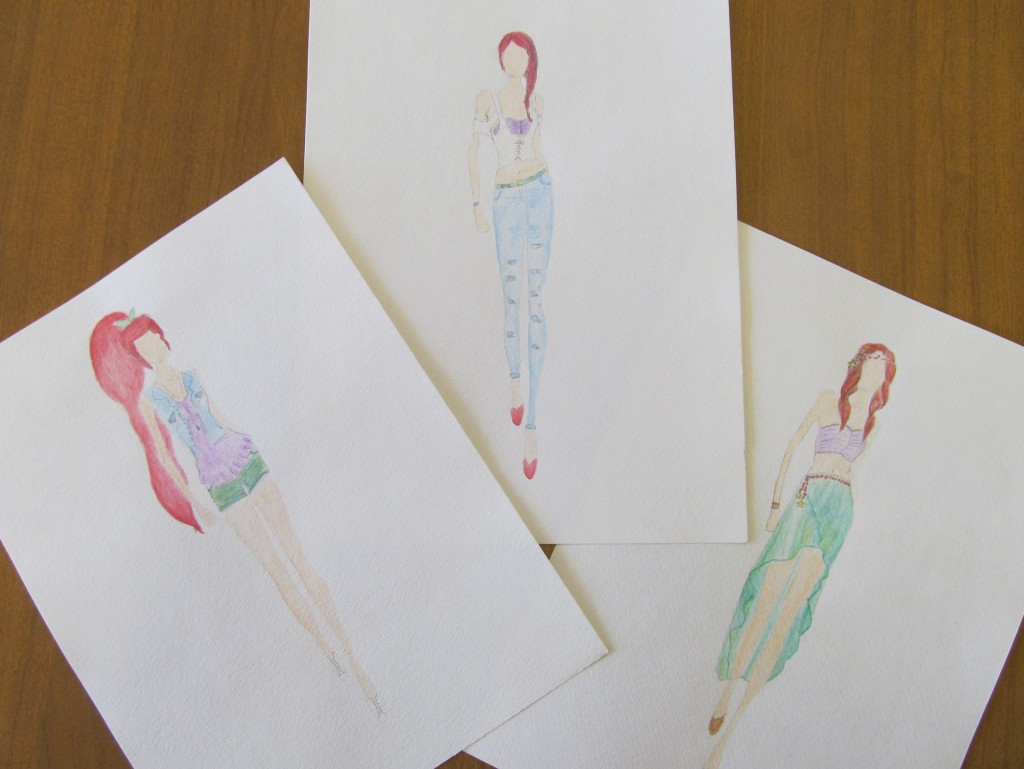Fashion Design Project/Unit
During my practicum I designed a small fashion design unit to do with the Fashion Design 12 students. Previously, their class had been mostly construction oriented. There had been some discussion as to the elements and principles of design, but little had been done concerning the design process. I wanted to introduce students to the design and portfolio process, provide an opportunity for students to take creative risks, and get students thinking about the various ways to express an artistic vision. The final project and performance task for the unit was a mini fashion portfolio for 3 designs inspired by a fairy tale.
Here is my original unit plan. Here is the original project outline and rubric.
One way I supported my students was to make a small slide show and link to on-line resources on my teaching blog.
Because several of the students were English language learners, I made some worksheets to help them through some of the skills-based activities we did. This project involved a lot of terminology, so having it written down and accompanying visual examples was helpful to them.
Worksheet – Elements of Design
Worksheet – Principles of Design
Worksheet – Watercolour Pencils or Paint (I print this on watercolour paper)
One of my main goals in the instruction of this unit was allowing for multimodal expression and engaging students in authentic assessment. The criteria for the assignment were taken directly from the Textiles 12 IRPs and integrated into a performance task I felt would be relevant to their future lives. There were content objectives, but how students expressed those objectives was largely up to them. Some met the criteria in the speech of their presentation, some included it all in the portfolio, and some accompanied their portfolio with a small essay. Throughout working on the project I gave feedback and set aside class time for the students to peer-assess.
Here is the simplified rubric I used for the final assessment & marking. Students seemed to find the original rubric overwhelming. I preferred, and they responded better to, a simplified rubric that had only the exemplary standards and plenty of room for individualized feedback comments. I felt this helped me give more constructive feedback.
Here’s one example of a student’s work:
Her inspiration ‘board’:
Her designs:

